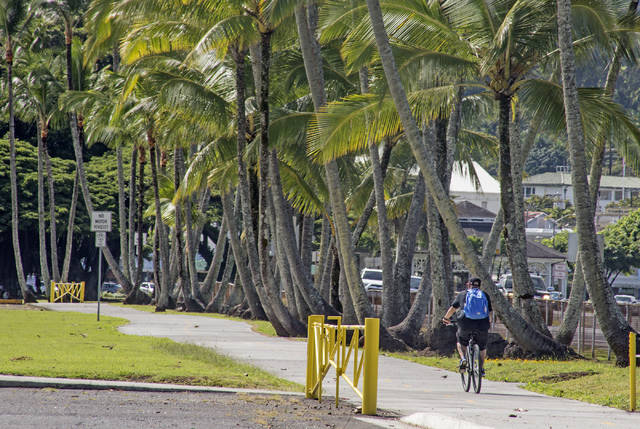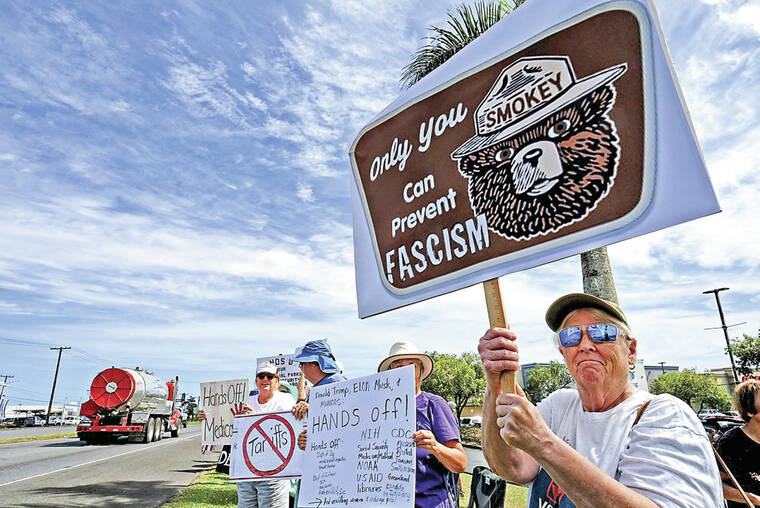Work is slowly progressing on the Hilo Bayfront Trails project.
The nearly decade-old project, which seeks to connect downtown Hilo with the Bayfront, awaits approval on a federal grant proposal for funding for its second phase.
A grant proposal for $220,000 was submitted in April, said Roy Takemoto, executive assistant for Mayor Harry Kim. If approved, the grant will cover half of the costs to build the next phase of the trails.
As for the remaining balance, the county will pay $155,000, while the remaining $65,000 will be paid by Hilo Bayfront Trails Inc., the nonprofit overseeing the project’s completion, Takemoto said.
Hilo Bayfront Trails vice president Matthias Kusch said the nature of the grant means the approval process will be a slow one.
“It’s a difficult grant,” Kusch said. “We’re asking for federal money to be funneled through the (Department of Land and Natural Resources) to the county and then sourced to the project.”
Takemoto said he expects confirmation on the grant in November — although Kusch noted it likely will take an additional six months for the grant money to trickle through the various other organizations to the project.
If and when the project receives funding, Takemoto said, the project’s planning phase will take three months. Finding a contractor will take an additional month, followed by a construction period of between four and six months.
The existing first phase of the trails was completed in late 2016 and consists of three separate walkway sections in the Bayfront area: from Mooheau Park to Pauahi Street, from Pauahi Street to the Bayfront canoe halau and from Pauahi Street to the Bayfront soccer fields. Together, the sections total 5,125 feet.
Phase two, meanwhile, consists of two stretches of trail extending 2,000 feet in total. One stretch will connect with the existing trail at the soccer fields to complete a loop, while the other will extend from the soccer field parking lots to the intersection of Kilauea Avenue and Mamo Street.
Takemoto said the Hawaii County Planning Department previously identified the Kilauea-Mamo intersection as a “gateway” to downtown Hilo in a plan earlier this year.
“The intersection was identified as a placemaking statement,” Takemoto said. “So the path will go right up to the gateway.”
An earlier plan for the second phase was to extend into the Wailoa River State Recreation Area, but the plan was altered when it was determined that the state parks division of the DLNR was the only agency able to do so. Phase three of the project will include a trail from Pauahi Street to Wailoa Park that the parks department will incorporate into an upcoming park renovation.
Takemoto said other trails built during Wailoa Park renovations will be incorporated into the trail network.
Email Michael Brestovansky at mbrestovansky@hawaiitribune-herald.com






